User feedback is necessary to drill down into the mobile app experience.
If you work in a SaaS company, you probably already know the value of contextual user feedback. Paired with behavioral data, it can tell you more about user experience and app performance than traditional link or email surveys.
But with a multitude of in-app feedback tools on the market, it might be hard to choose the perfect software for the job.
To make things easier for you, we've prepared a subjective list of the best web and mobile app feedback tools and sorted them by use cases. We also threw in some tips and best practices to give you a head start after you make your pick.
Here’s our promise: after reading this article, you’ll be able to start collecting your first valuable insights in five minutes. Let’s dive in.
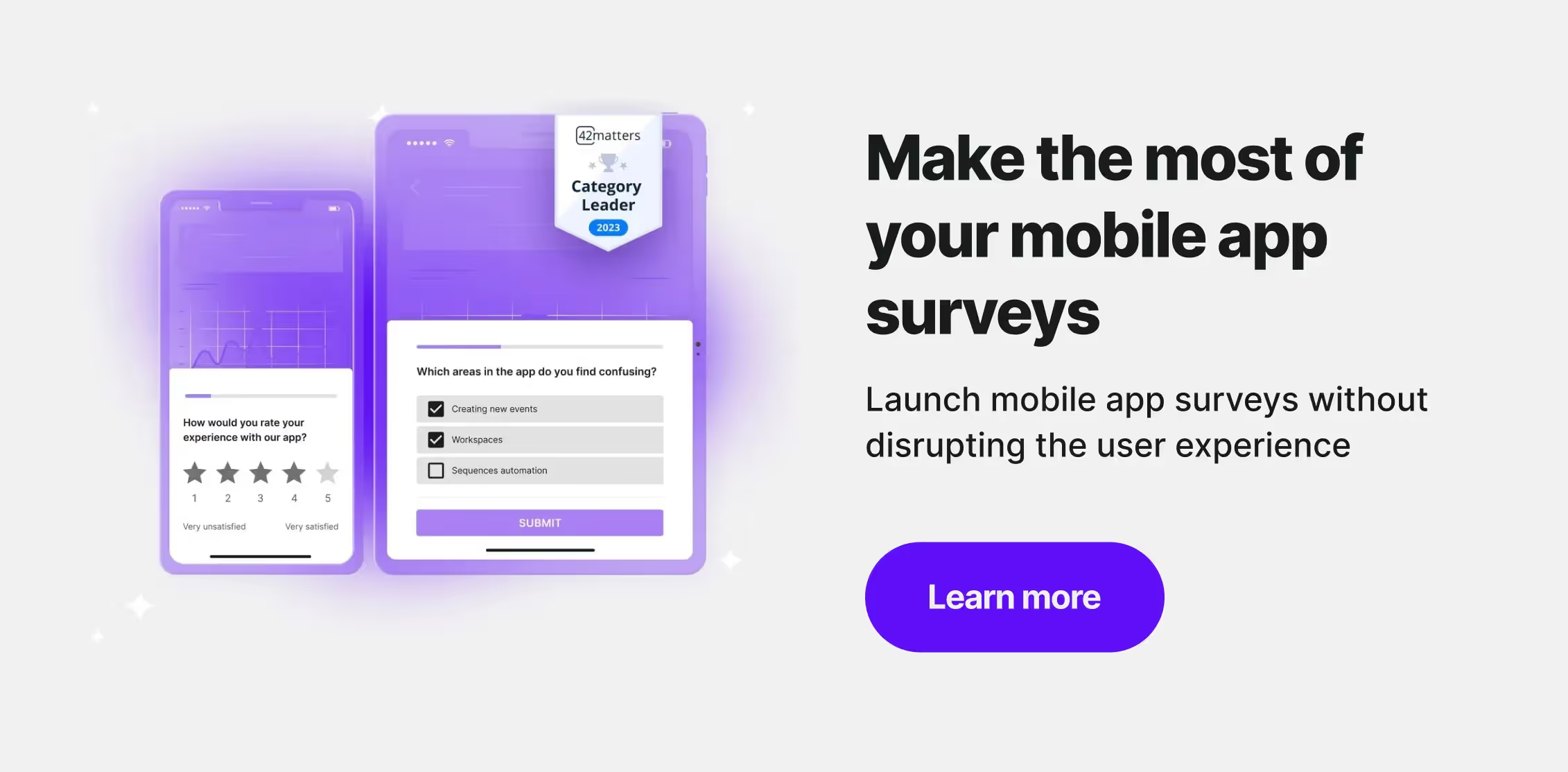
What is in-app feedback? General vs. contextual feedback
In-app feedback can replace or complement the more traditional ways of sending surveys—via emails or chatbots—for most online businesses.
User fedback collected directly inside your app eliminates any extra steps your customers may have to take to communicate with you, such as clicking a link or starting a conversation with customer support team.
One of the most common ways of collecting in-app feedback is via pop-up surveys. But there are a few other methods available—we'll look at them below. Whichever method you choose will depend on your feedback needs and the nature of your app.
But before you start wondering which method is the best for you, figure out which type of feedback you want to collect.
General (relationship) in-app feedback
General feedback doesn't concern any specific aspect of your app. It enables your users to speak up about whatever they want or share their general satisfaction levels with your app.
Here is what general in-app feedback might encompass:
- Customer satisfaction surveys, such as Net Promoter Score (NPS) surveys, Customer Satisfaction (CSAT) surveys, or Customer Effort Score (CES) surveys
- Feedback buttons your customers can click at any time while using your app to share their thoughts, ideas, bug reports, or whatever comes to mind
- Mobile app surveys to rate the application
- Surveys collecting user feedback on an app redesign
- And more.
Here's an example of an NPS survey with a universal question that can be used across many different service and product types.
General surveys can be distributed via different channels, for example, email, link, or website. The benefit of running them within your app is that they fit inside your users’ workflows which might generate higher response rates.
Contextual (transactional) in-app feedback
Contextual feedback concerns a specific interaction with the app—for example, a feature update or checkout process. It's displayed right after a client completes the desired action to catch them while they're still engaged.
Here's what contextual feedback collection may look like:
⭐️ A pop-up survey that's shown to users who have just finished using a new feature you rolled out
⭐️ A post-purchase satisfaction survey that displays right after checkout
⭐️ A bug-reporting feature that lets your users notify you about specific app problems
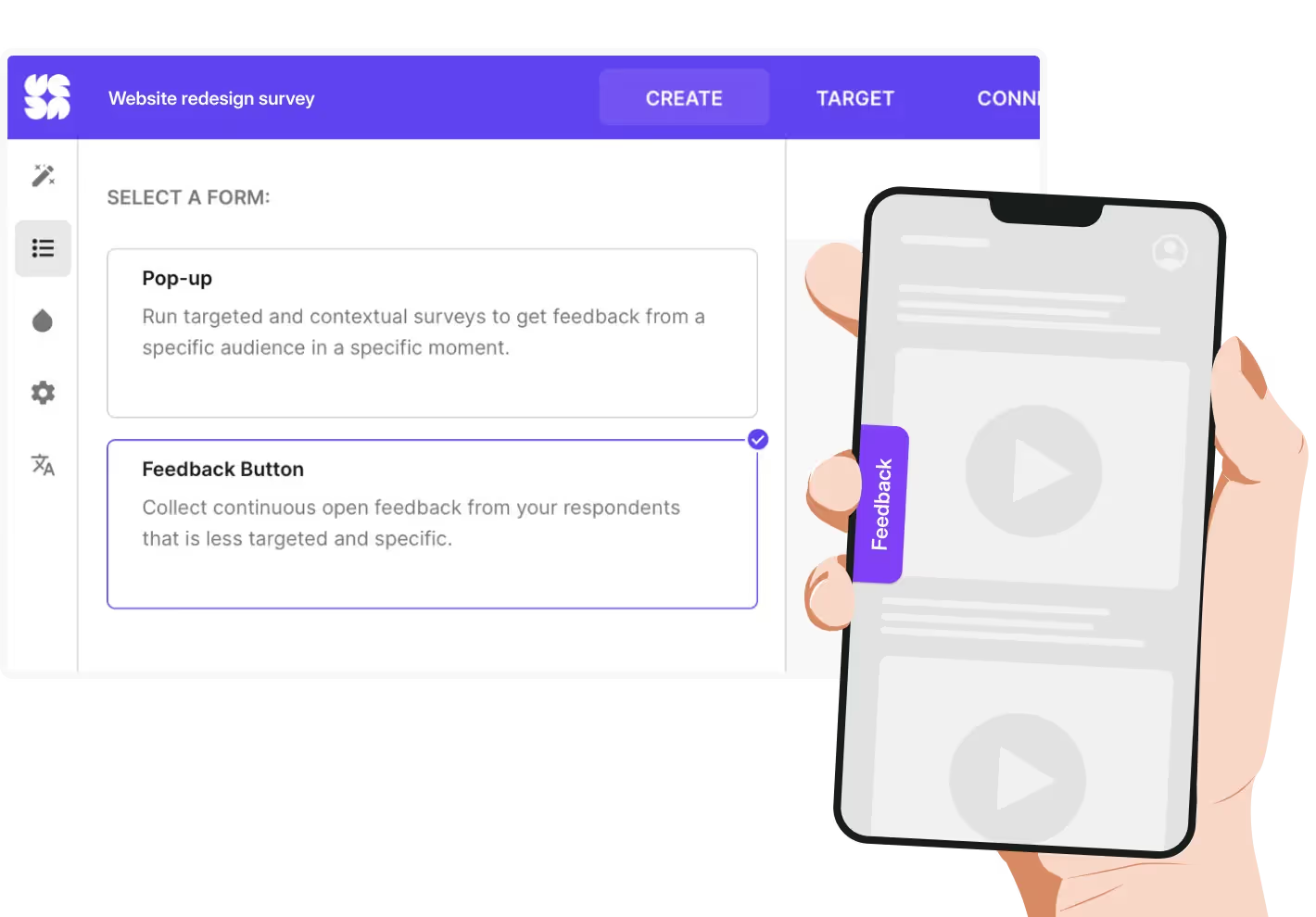
Why should you collect mobile app feedback?
Running in—app surveys in addition to or in replacement of email or link surveys has multiple benefits.
They're context-sensitive
There is no better place to ask your users about their experience with a specific feature than right after interacting. The best survey tools (Survicate included) offer targeting and triggering options that will let you laser-focus your surveys, e.g., only show them to new users or those who interact with a feature more than once.
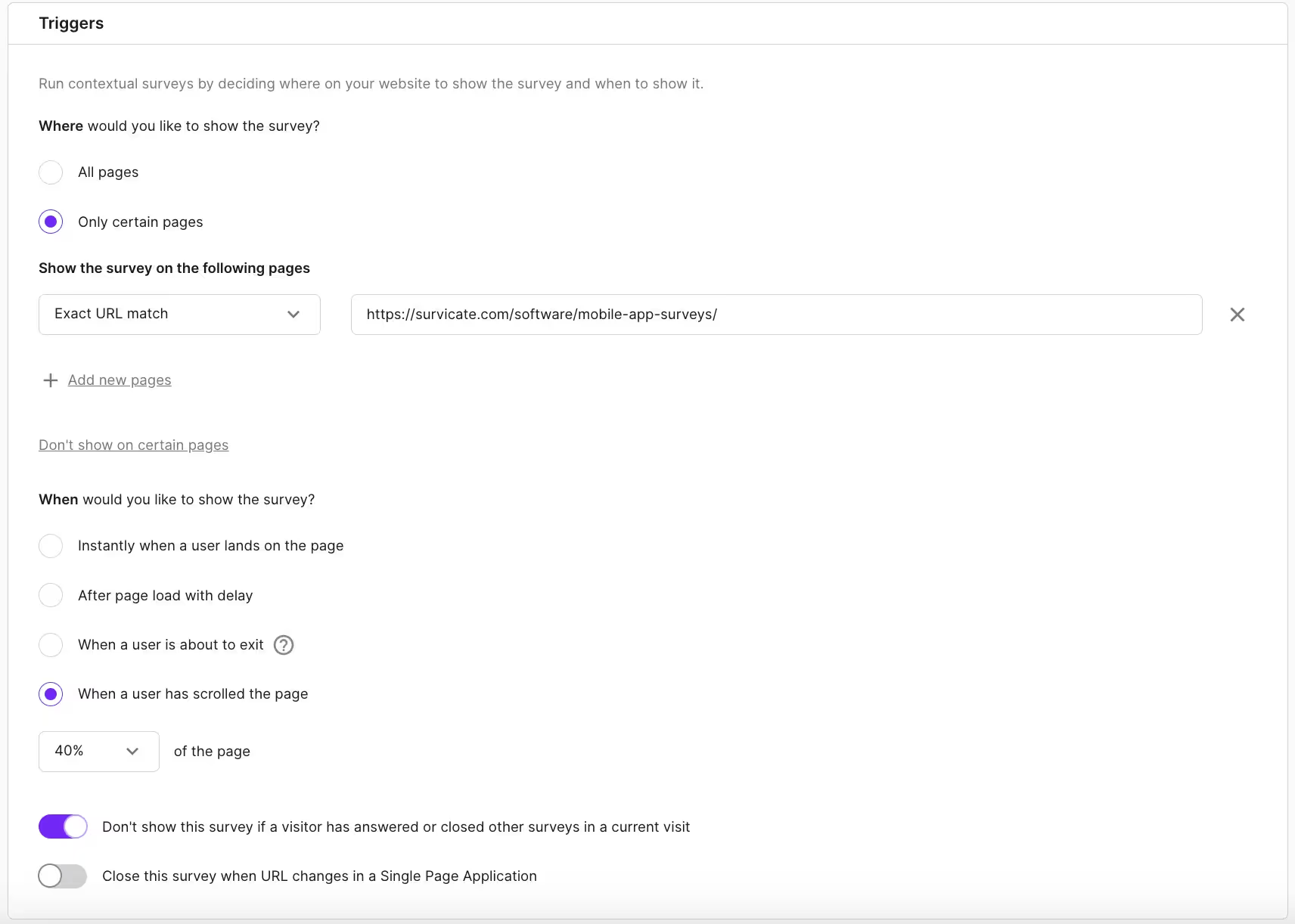
They generate higher response rates
Because you're catching your users at their most engaged—when they're already using your product and not just leisurely browsing their email inbox, for example—in-app surveys typically have higher response rates. We discovered that Survicate surveys on web apps or websites score almost twice as high as email surveys.
They help you monitor app performance.
Users will have an easier way of informing you about any bugs or usability issues with your app.
They run on auto-pilot.
Typically, in-app surveys are run with the help of dedicated survey software that will let you set up one-off or recurring surveys with specific targeting and start and finish times. So, you can set up your survey once and then just collect continuous feedback.
Tools like Survicate let you schedule recurring surveys or one-off campaigns with precise targeting. You can also use our AI-powered survey builder to get started in seconds.
They will help you plan your product roadmap
Your users will be most inspired to name their most and least favorite features or provide new ideas while using your app. Feature prioritization surveys, such as the one below, or voting boards, will help you collect and sort product development ideas.
And with Survicate’s Insights Hub, you can centralize all feedback—from surveys, app reviews, and interviews—in one place, so your product team has a full picture when making roadmap decisions.
In-app feedback collection methods: 10 best in-app feedback tools for web and mobile
Now that you know why you should collect in-app feedback, let's move to the more practical part—picking the best tools for the job.
We've compiled a list of the ten best tools and divided them into categories to help you find the right software for your current needs and use cases.
In-app surveys and general feedback
These tools will help you run in-app surveys covering every use case—product feedback or customer satisfaction. Most general survey and feedback tools offer more than one distribution channel, so you can use them across an entire organization and not just inside the app.
Survicate
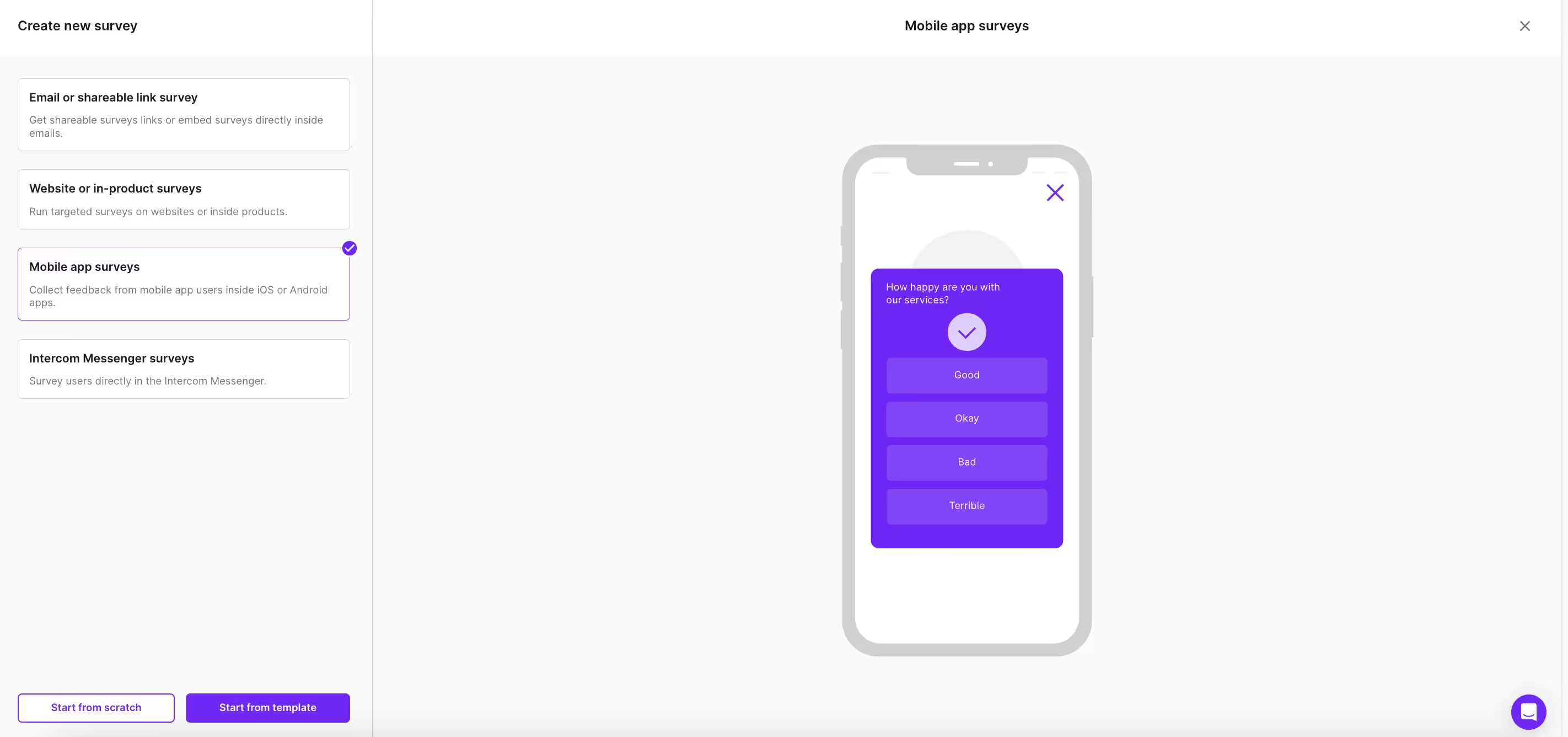
Survicate is a flexible customer feedback platform that lets you effortlessly collect continuous insights across the whole user journey.
The tool's in-app feedback-collecting features include web app and mobile app surveys (with a dedicated mobile SDK), both super easy to launch. You can run recurring survey campaigns and one-off quick surveys or set up a widget for continuous feedback collection.
One way to collect in-app feedback in your app is through pop-up micro surveys. Thanks to advanced targeting and triggering options, you can display them to the right users at the right time and keep them highly contextual.
eb app surveys are super fast and easy to launch. They don't have to be set up by a developer; all it takes is a few lines of code that you can just copy and paste. You can create your surveys out of countless ready-to-go templates, including CES, CSAT, or product-market fit surveys, such as the one below. You can also start from scratch with the help of our intuitive creator or use the 1-prompt AI generator.
Mobile app surveys can be easily set up thanks to mobile SDK. It's worth noting that once it's installed, all surveys can be launched and edited inside the Survicate panel, and they don't slow down your app.
You can also send your surveys via link and email, which might come in handy when running longer customer satisfaction survey campaigns.
A real-time analytics dashboard will let you monitor your results, see response breakdowns, generate word clouds to look for trends, and see automatic reports.
Survicate also provides dozens of native integrations for different use cases. Product teams will benefit from connecting to UXCam, Smartlook, Mixpanel, and Amplitude for analytics or Productboard for product management.
Email alerts or Slack notifications will help you keep track of your feedback and close the feedback loop.
Thanks to unlimited surveys, projects, and seats, many different integrations, and full customizability, the tool is great for scaling online companies. It can be used by every company team at once and gives you the flexibility to experiment with distribution channels.
GetFeedback
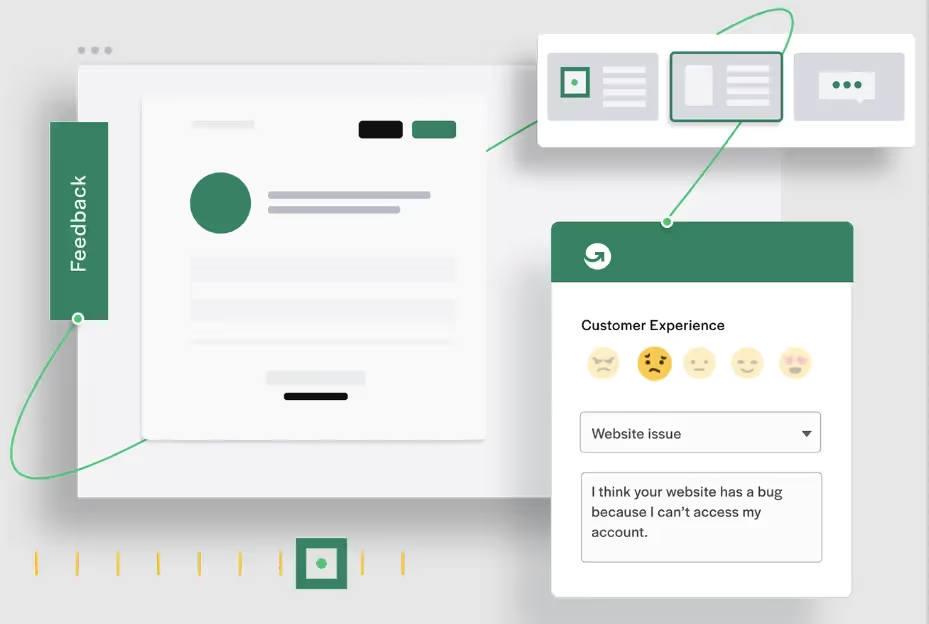
GetFeedback is an agile customer experience tool that lets you collect feedback across the entire customer journey.
With GetFeedback, you'll create customized surveys out of templates for NPS (Net Promoter Score), CES (Customer Effort Score), CSAT (Customer Satisfaction), Digital and Purchase Experience, and more. You can then send them via email, SMS, website, and web and mobile apps.
Integrations with communication tools and real-time alerts will let you immediately act on the feedback. Thanks to an advanced analytics panel, you'll see data from all your channels in one place and build custom dashboards based on chosen attributes. You can also track your most vital customer experience metrics over time and discover key phrases, topics, and sentiments with the help of machine learning algorithms.
GetFeedback's mobile app feedback solution lets you set up on-brand buttons and surveys. You can also choose to embed surveys into any content on your site. Targeting options allow you to select respondents based on browsing or user behavior. GetFeedback also offers an easy-to-launch mobile SDK for IoS and Android with the same features as their web app surveys.
You can try the tool out with a free trial. To get the pricing of their paid plans, you need to request a demo. It's worth noting that mobile surveys are only available as part of the highest plan.
GetFeedback is an enterprise-oriented tool. If you're a small startup with a limited budget and surveying needs, you should look for another tool.
.avif)
Hotjar

Hotjar is a popular tool that connects numerical data with qualitative customer feedback.
Hotjar's flagship feature is a heatmap that lets you visualize your users' behavior on your site and inside your app. The tool also offers session recordings that you can filter and compare based on different user cohorts.
You can collect mobile app feedback with the help of a feedback button that you can embed in your app, or targeted customizable pop-up website and web app surveys. The tool also gives you an opportunity to send your surveys via a link. However, unlike Survicate, it doesn't have a mobile SDK for mobile app feedback collection.
Hotjar's analytics dashboard shows you all the insights collected with the tool in one place. Multiple integrations will let you deepen your data analysis, push survey insights into your CRM, or receive notifications.
The software allows you to collect, store, and analyze your quantitative and qualitative data in one place. However, you might find its surveying options limiting due to few survey question types, limited customization options on lower plans, and the lack of a mobile SDK.
The paid plans start at $32 per month when billed yearly, but bear in mind that this only includes 20 responses. You'll probably need to upgrade to about 250 to have enough data to analyze. That will cost at least $76 per month.
Feedback widget
Unlike surveys, a feedback widget is a way to let your users leave feedback whenever they want by clicking on a simple button (or a different symbol) embedded somewhere in your app.
It's much less disruptive than surveys, but its unobtrusive nature usually generates lower response rates. This is why best to combine surveys and widgets within one app.
Survicate
Yes, Survicate also offers a feedback widget. The Feedback Button stays on your site, passively collecting feedback over time without any extra effort. It's quick to set up, so you can start getting feedback right away.
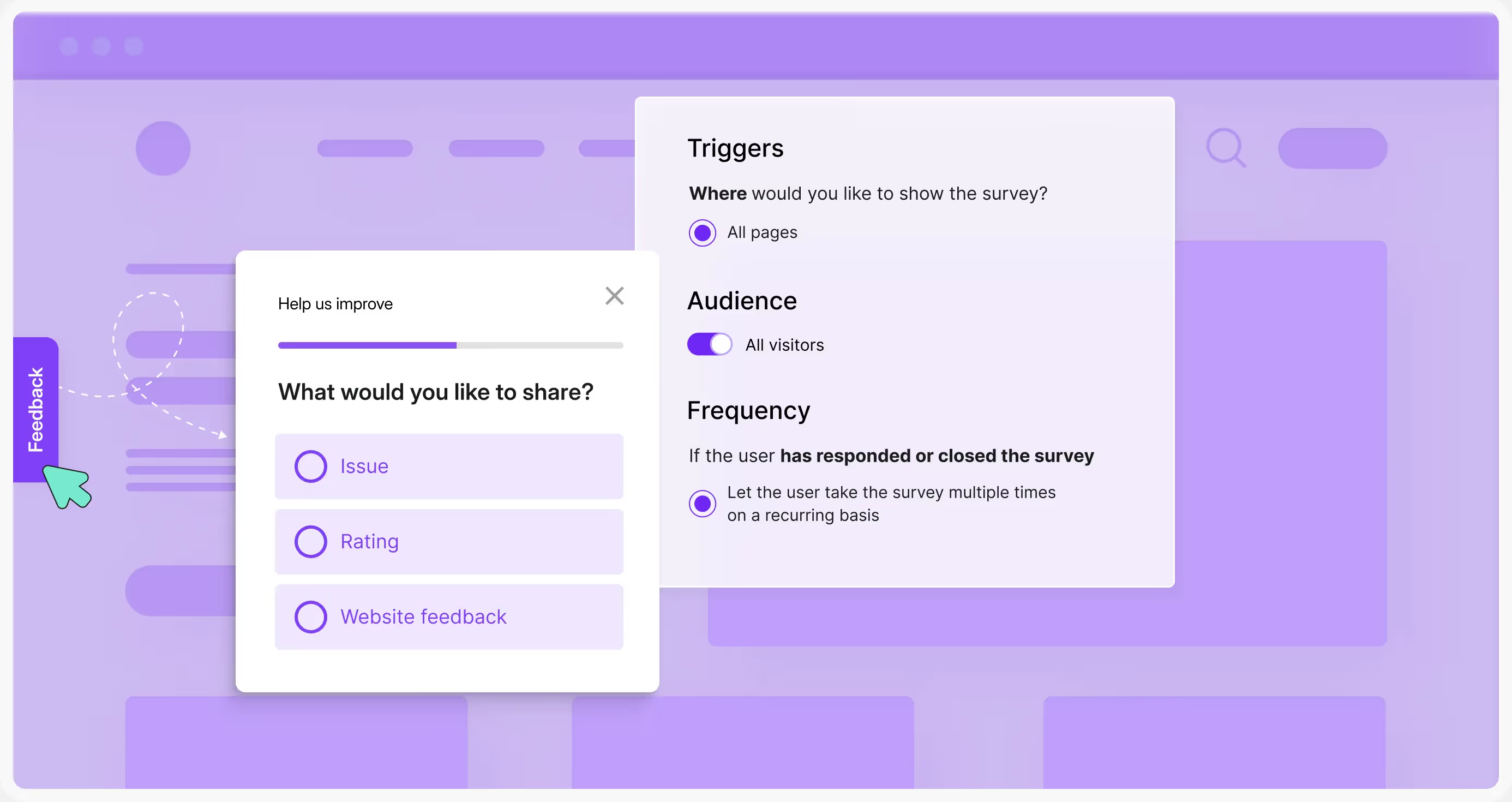
Its non-intrusive design lets users give feedback at their convenience without being interrupted, leading to more genuine and honest responses. What's more, you can customize it to match your site's look, maintaining a consistent brand experience.
With Survicate's Feedback Button, you can capture even deeper user insights. Target specific user groups and URLs to get detailed feedback, which will help you understand different user needs.
And if you integrate with tools such as Jira or Slack, you can quickly turn the incoming user feedback into tasks improving your response time to user concerns.
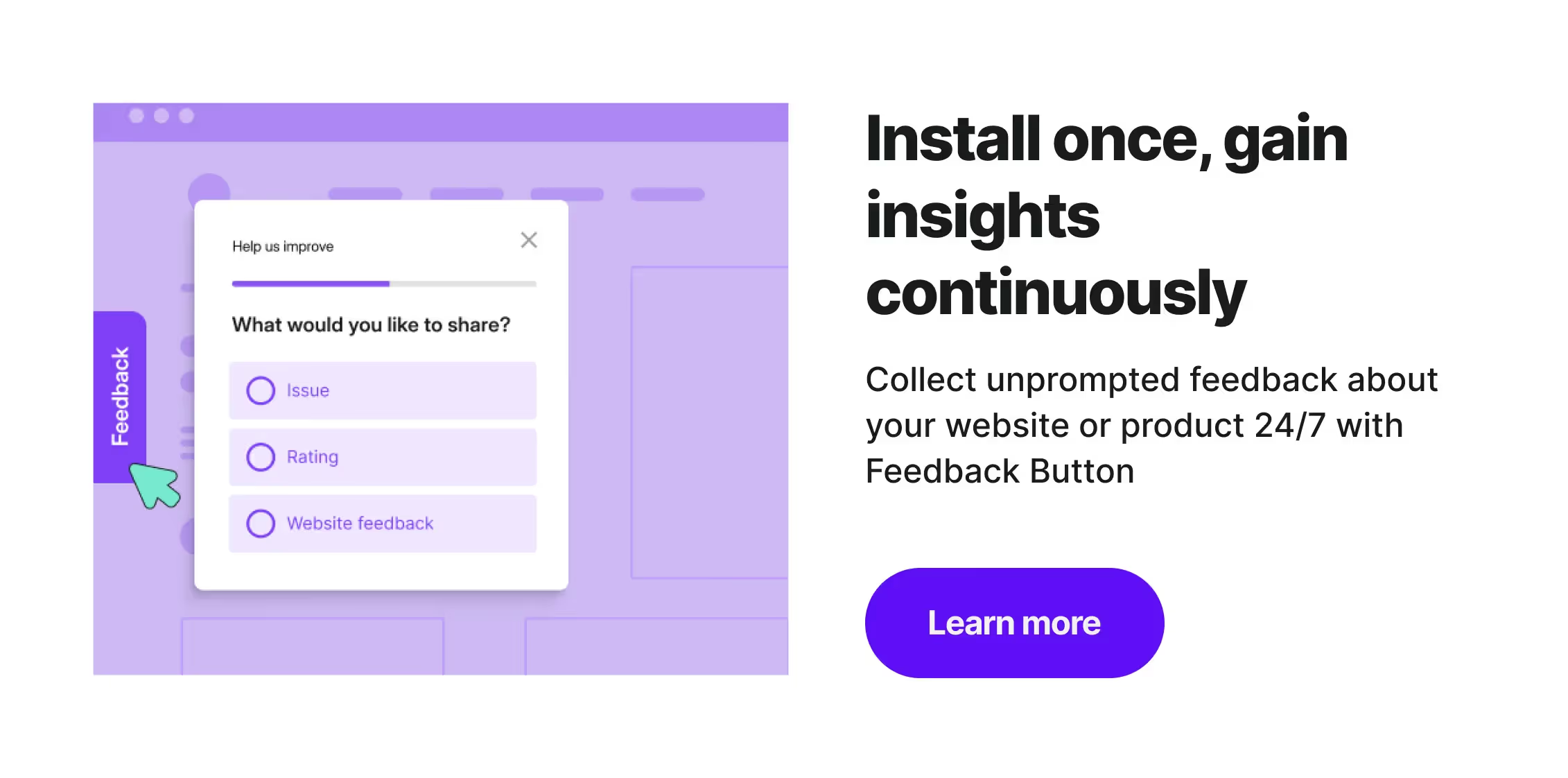
Doorbell
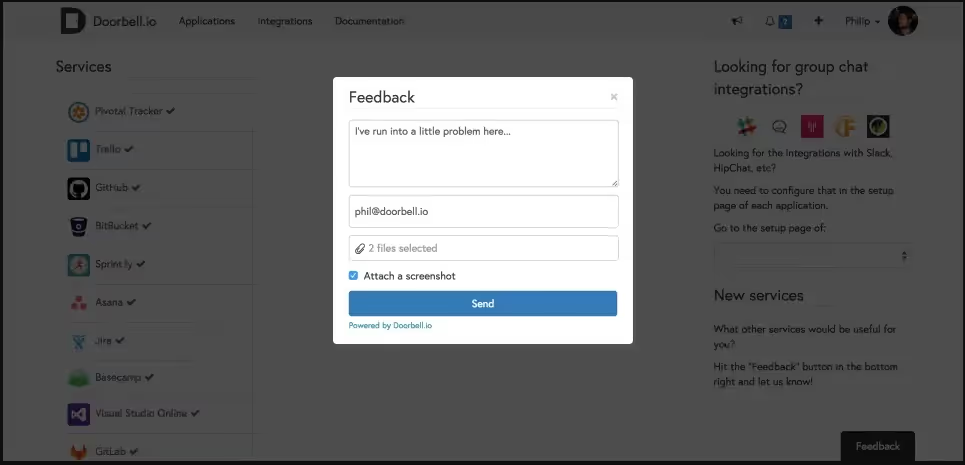
Doorbell is a feedback widget software for websites and web and mobile apps.
The feedback button lets users submit their feedback anytime, with screenshots attached. You can customize the questions and the look of your microsurveys, and send automatic replies to respondents. Additionally, the tool generates screenshots whenever someone submits feedback, so you can see what the respondent was doing at the time of their reply.
A simple, collaborative analytics dashboard lets you track and filter through results.
Doorbell offers integrations with help desks, team chat apps, and project management apps. Unfortunately, project management tool integrations are unavailable on the free and cheapest plan.
Doorbell has an unlimited free plan with limited features, while subscriptions start at $29 a month.
The tool is a very simple feedback widget solution that might be enough for you if you don't need any other survey distribution channels.
Pendo
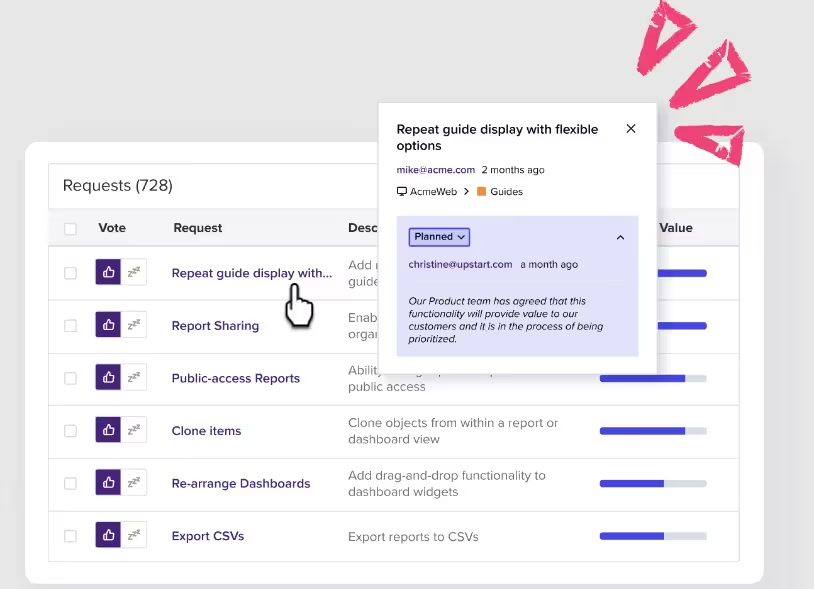
Pendo is a comprehensive product experience platform both for customer- and employee-facing software.
Pendo's in-app feedback solution lets users submit requests and bug reports at any time.
You can quickly group requests based on popularity and other attributes as well as quantify revenue opportunities to prioritize product roadmap and build just the features your most valuable customers want.
However, Pendo's flagship features are walkthroughs, tooltips, and onboarding pop-ups that guide your users through the app. They work great for self-serve SaaS software as they improve product adoption, increase satisfaction, and deflect support tickets.
Pendo also tracks user behavior across your web, mobile, and internal apps, and its advanced analytics dashboard helps you aggregate all the product adoption data for better development decisions.
Pendo's feedback collection functionality is only available for the Pro and higher plans. To get the pricing, you need to request a demo.
If you're after fully customizable, flexible in-context surveys, Pendo is probably not your best bet. But if you're a product team member who's mostly after feature requests and wants to make use of Pendo's great onboarding functionality, you could try it out.
UserVoice
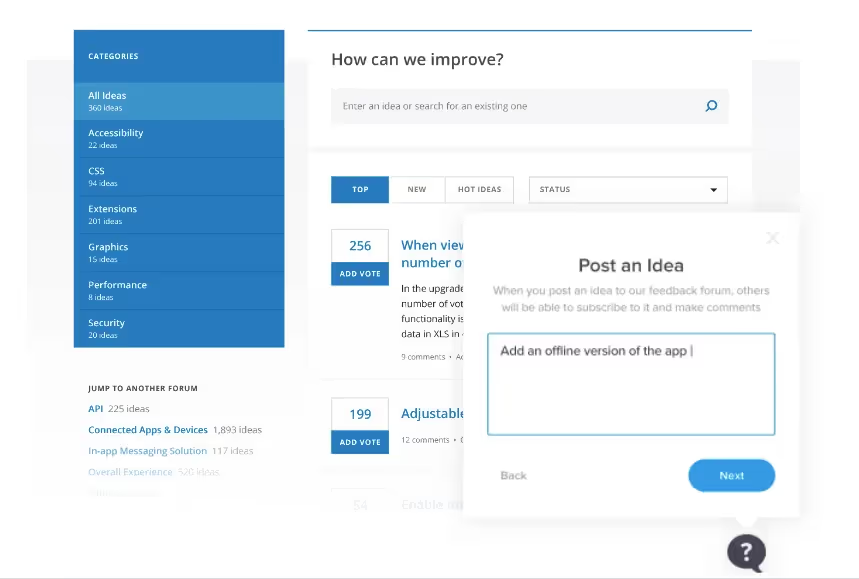
UserVoice is a centralized product feedback management software for growing SaaS companies.
The tool's feedback widget and API let you set up a button in your web or mobile app that enables users to share feedback at all times as well as attach screenshots.
UserVoice offers lots of features beyond the feedback widget. You can collect user insight and product ideas with a feature voting board. Multiple integrations allow other teams to send feedback from other sources to UserVoice seamlessly.
The advanced dashboard lets you analyze aggregated feedback and quickly prioritize your product roadmap, and the integration with Salesforce will let you quantify the impact of requests from prospects.
Internal status updates and a shareable roadmap will let you keep both the internal teams and your users informed about the latest changes and updates.
UserVoice also offers a product validation platform and different feedback program development and training services. Those are billed separately.
Prices start at $699 a month, billed annually. If you don't need a feedback aggregator and you have a limited budget, we suggest you look for a different solution.
App performance management
App performance management software is dedicated to product teams that want to monitor app stability. Many of them offer features that let you collect in-app feedback as well; however, the feedback is usually focused on potential crashes, bugs, or product ideas.
Instabug
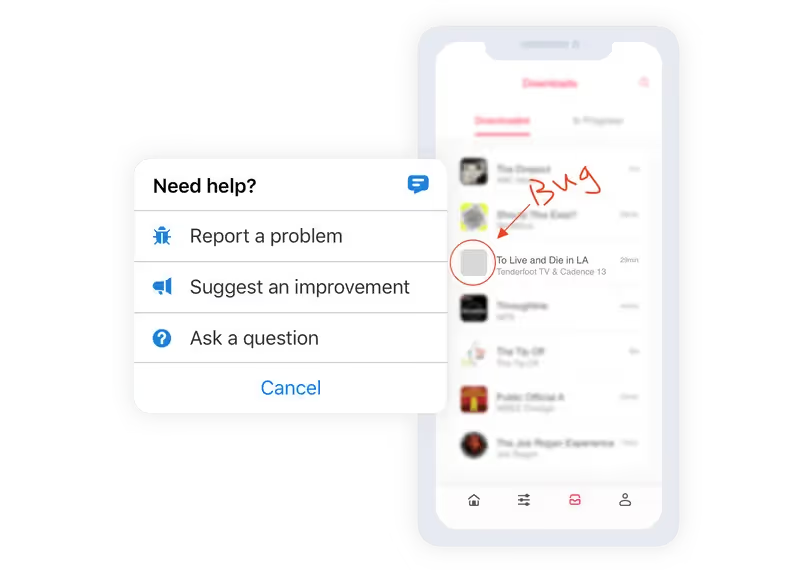
Instabug is an all-in-one SDK for mobile app performance management.
The in-app feedback feature lets you receive bug reports and additional insights from app users and prototype testers.
All the users have to do to leave feedback is shake their devices. A pop-up that appears lets them report a problem, suggest an improvement, or ask a question, with an option to attach screenshots, voice notes, and screen recordings. Instabug also shows you exactly what was happening with the app when the user reported a bug and helps you automate user replies.
Instabug’s features also include an app performance monitoring tool that measures crashes, slow screen transitions, client-side network latency, UI, and more. They’re all summed up as one metric that makes it easy to monitor and assess app health.
Instabug offers an unlimited freemium plan with limited features. Paid plans start at $249 a month billed annually, and there's a 14-day free trail available.
The tool is an easy and unobtrusive way of collecting user feedback for mobile apps. However, it will mostly work for product development teams seeking bug reports and feature ideas. It will not let you measure customer satisfaction or run full feedback campaigns.
Usersnap
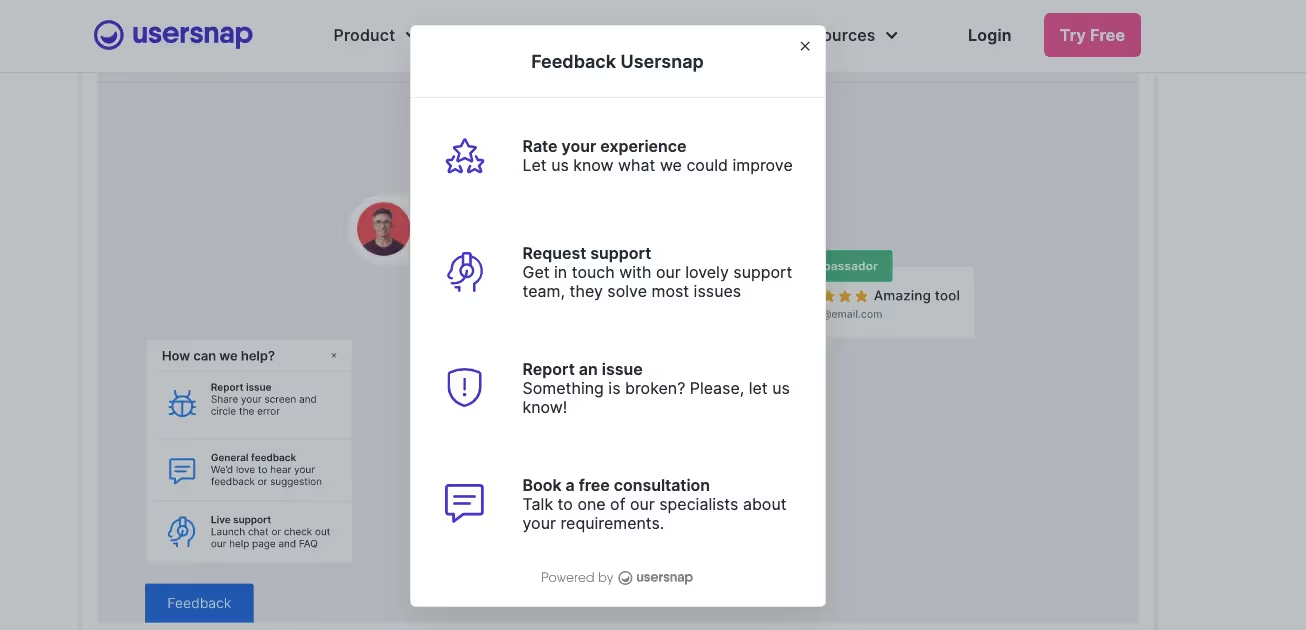
Usersnap is a comprehensive in-app customer feedback software.
The tool allows you to set up customized feedback buttons and widgets (with additional options such as NPS, feature request forms, or screen recordings) and launch targeted pop-up surveys.
Apart from in-app surveys, Usersnap also offers link, email, and online website surveys, plus a shareable voting board that lets you prioritize your feature ideas, get new ones, and announce changes to users. Mobile SDK is only available on the highest premium plan.
Usersnap’s analytics dashboard lets you assign, label, and share feedback with your team. You’ll analyze all the feedback quickly with the help of reports and filters. The tool also integrates with multiple product management, collaboration, data analysis, and DevOps tools.
Usersnap prices start at €69 a month for a basic plan that allows you to launch only one active survey. The next plan starts at €69 a month, billed annually.
Usersnap works great for web app microsurveys and will satisfy the needs of most product teams. However, it might not be enough if you want to run long-term customer feedback campaigns and track customer satisfaction.
How to collect in-app feedback with surveys? Best practices
Here are a few tried-and-tested methods of making the most out of your in-app surveys.
Set up recurring survey campaigns
There's no better way of monitoring your app performance than collecting cyclical mobile app feedback. You'll keep track of your app's stability and monitor user satisfaction to set up internal benchmarks and automate feedback campaigns.
Make your first survey question a smiley scale or rating
Busy users are more likely to interact with microsurveys that only require a click, especially on mobile. Even if you want to ask open-ended questions, ease the respondents with a close-ended question such as a smiley scale or a rating survey first to break the ice.
Check the SaaS customer satisfaction survey template below to see how effortless it can be to collect user insights:
Customize your survey design to match your app
Surveys and forms that look like an extension of your app boost credibility, improve branding, and seem less disruptive. Advanced customer feedback tools like Survicate will let you fully customize the design of your surveys and forms.
Monitor feedback in real time and reply—especially if it's negative
Have your customer success team monitor all the responses to catch unhappy clients before they give you a bad review on G2 or the app store. Chances are, you may solve their problems or offer compensation.
It's easy to do if your survey tool integrates with communication software, such as Slack or Microsoft Teams.
Always use targeting
We rarely want our survey to appear for all users whenever they open the app. Even general satisfaction surveys can benefit from some targeting—e.g., you should only show them to users who have had the chance to interact with your app properly.
Usually, the more targeted your survey is, the more valuable and accurate your results will be.
Connect user feedback with your other user insights
Don't let your survey data just sit there. To really let feedback fuel your product, you need to connect it to behavioral user data to get a complete image of how your audience interacts with the app. For instance, you can observe where your users report the most negative opinions or which features your NPS detractors use to improve app performance.
Check if your feedback tool of choice connects with your favorite data analytics tool. For example, Survicate integrates natively with Mixpanel or Amplitude, which lets you send your survey data to the tools as events.
Plus, Survicate supports event-based targeting—so you can trigger surveys based on user actions and tie qualitative feedback directly to product behavior.
.avif)
Start collecting user insights for free with Survicate
Hopefully, the list above made your choice of the perfect in-app feedback tool a bit easier. If not, we recommend trying a few free trials to see which one fits your product team best.
If you're looking for a customer feedback platform that makes it easy to collect insights directly inside your product—on both web and mobile—Survicate’s in-product survey software is a solid choice.
You can run targeted, behavior-triggered surveys using just a few lines of code (or our mobile SDK), and customize the design to feel native in your app. Use built-in templates like NPS, CSAT, CES, or product-market fit surveys, or generate custom ones with AI.
With native integrations to tools like Mixpanel, Amplitude, UXCam, Productboard, and Slack, it’s easy to connect feedback with product analytics and turn insights into action. You can even get notified in real-time when issues arise, helping you close the loop faster.
Start collecting product feedback, uncover bugs, and validate feature ideas—all in one place. Sign up for your free Survicate account today.








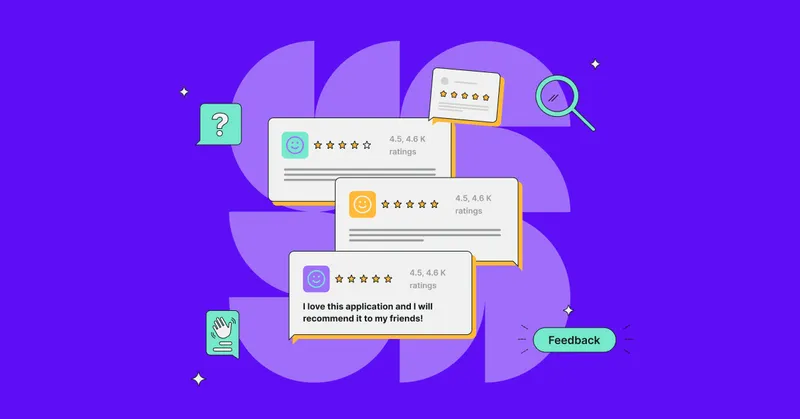
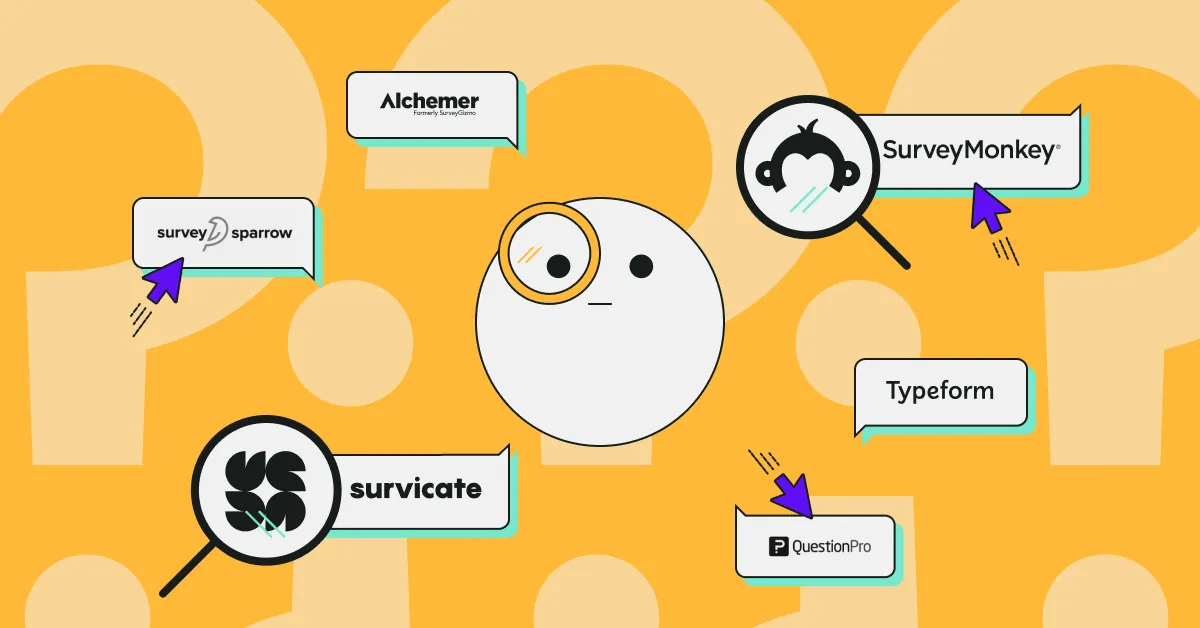
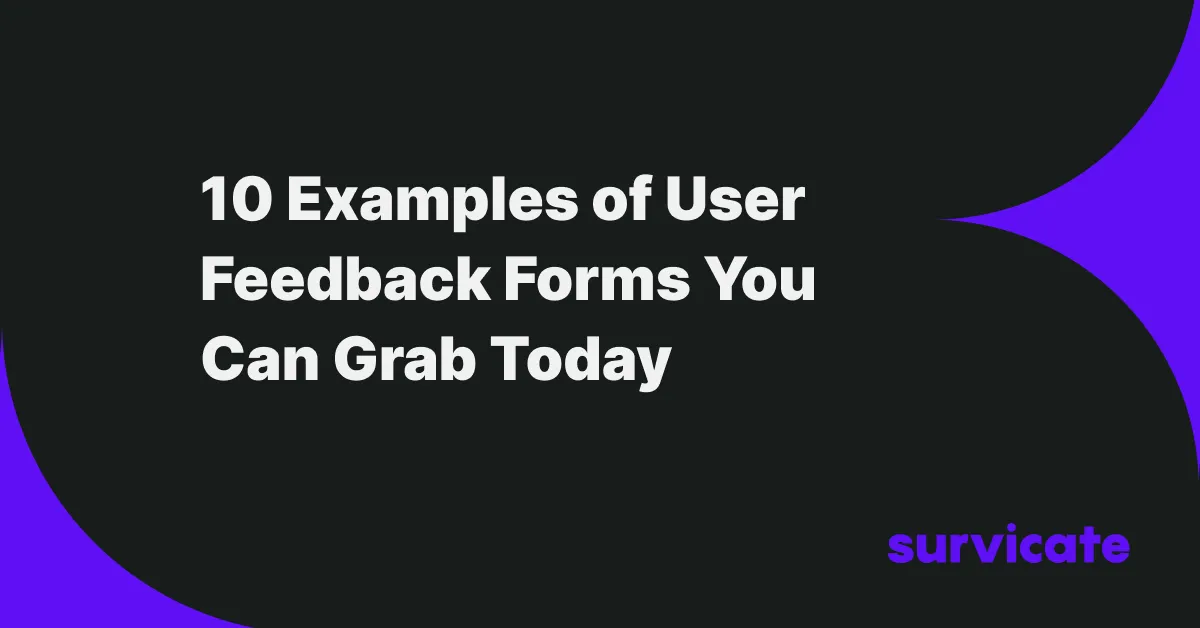
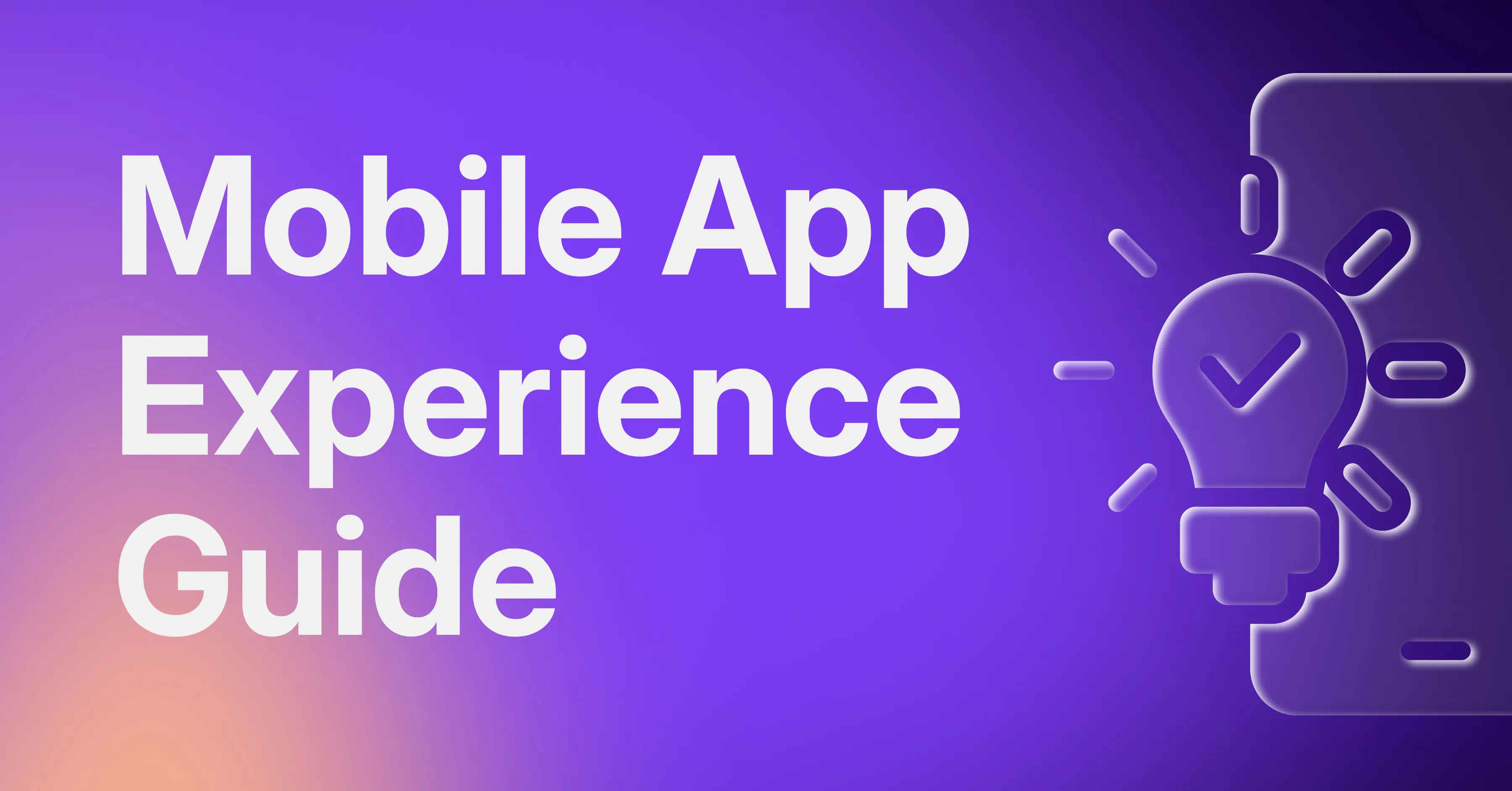



.svg)

.svg)



